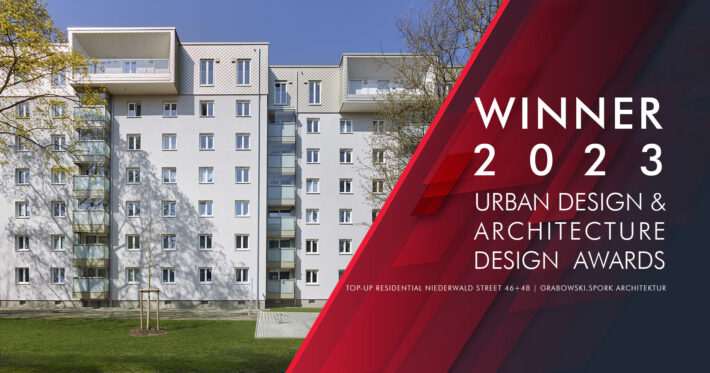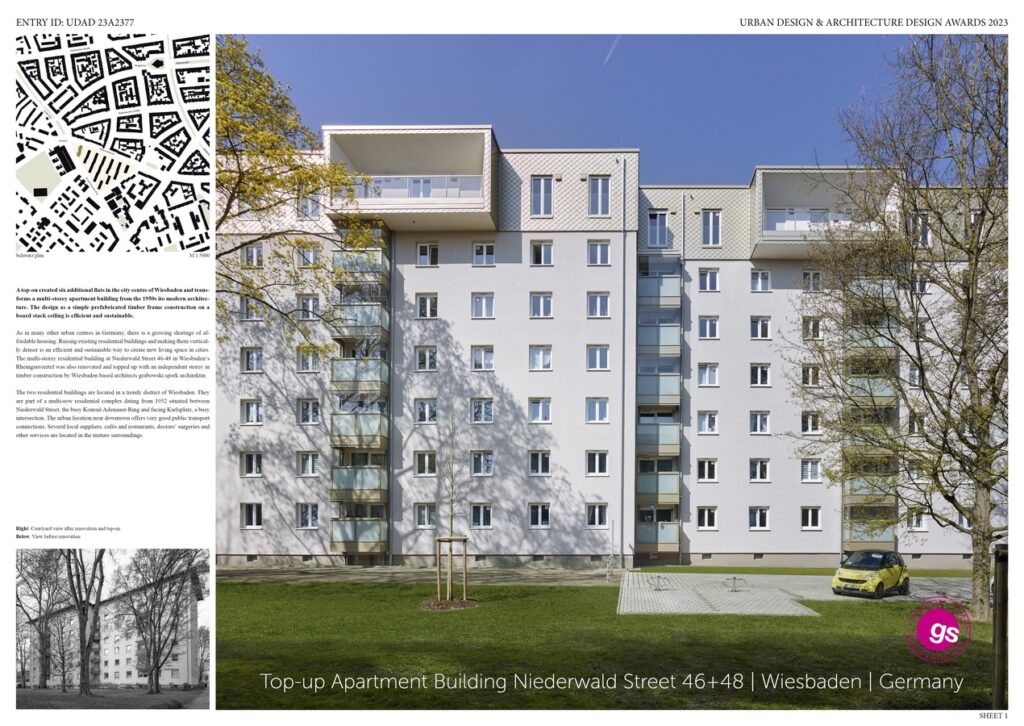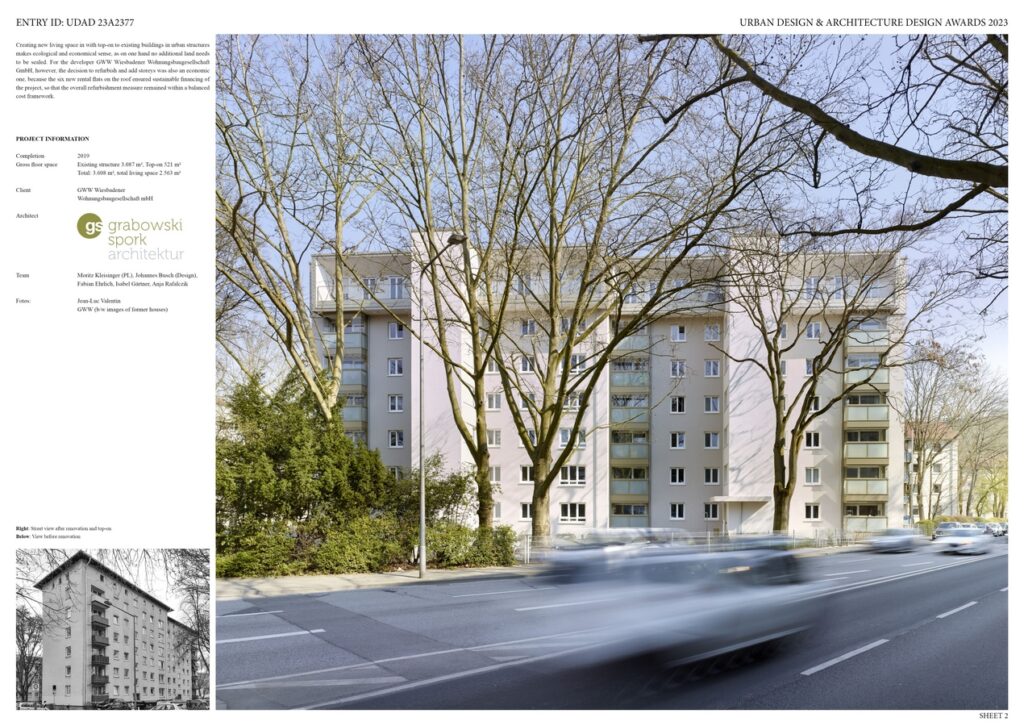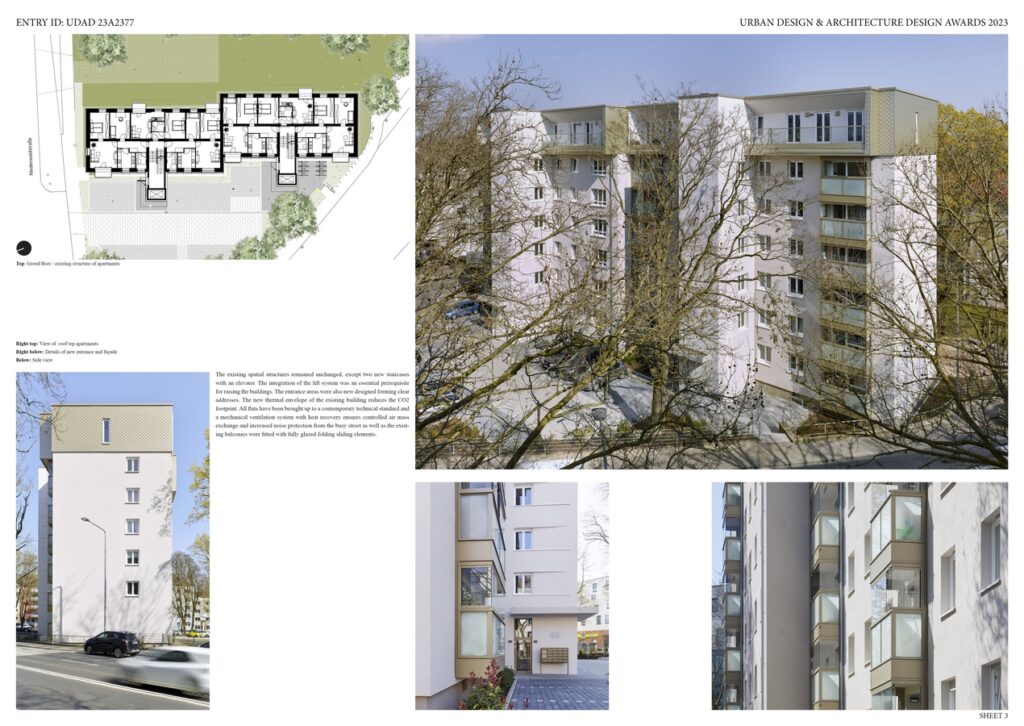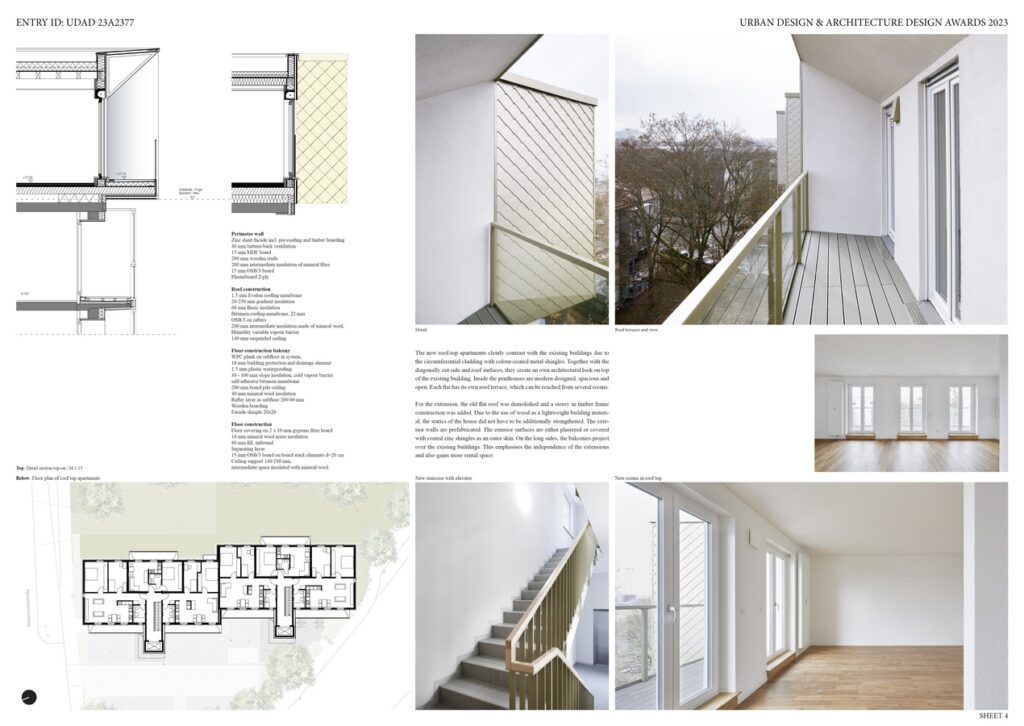A top-on created six additional flats in the city centre of Wiesbaden and transforms a multi-storey apartment building from the 1950s ito modern architecture. The design as a simple prefabricated timber frame construction on a board stack ceiling is efficient and sustainable.
Urban Design & Architecture Design Awards 2024: Entries Open!
Take your work to the next level. Register Now…
Gold 🏆 Winner
Urban Design & Architecture Design Awards 2023
Top-up Residential Niederwald Street 46+48
Residential Apartment (Built)
Firm
grabowski.spork architektur
Architect/Designer
Christoph Grabowski, Dipl.-Ing. Architekt | Jan Spork, Dipl.-Ing. Architekt BDA
Design Team
Moritz Kleisinger (Project Manager), Johannes Busch (Design), Fabian Ehrlich, Isabel Gärtner, Anja Rafalczik
Location
Niederwaldstrasse 46+48, Wiesbaden
Country
Germany
Photographer/Copyright
©Jean-Luc Valentin
As in many other urban centres in Germany, there is a growing shortage of affordable housing. Raising existing residential buildings and making them vertically denser is an efficient and sustainable way to create new living space in cities. The multi-storey residential building at Niederwald Street 46-48 in Wiesbaden’s Rheingauviertel was also renovated and topped up with an independent storey in timber construction by Wiesbaden based architects grabowski.spork architektur.
The two residential buildings are located in a trendy district of Wiesbaden. They are part of a multi-row residential complex dating from 1952 situated between Niederwald Street, the busy Konrad-Adenauer-Ring and facing Karlsplatz, a busy intersection. The urban location near downtown offers very good public transport connections. Several local suppliers, cafés and restaurants, doctors’ surgeries and other services are located in the mature surroundings.
The new roof-top apartments clearly contrast with the existing buildings due to the circumferential cladding with colour-coated metal shingles. Together with the diagonally cut side and roof surfaces, they create an own architectural look on top of the existing building. Inside the penthouses are modern designed, spacious and open. Each flat has its own roof terrace, which can be reached from several rooms.
For the extension, the old flat roof was removed and a storey in timber frame construction was added. Due to the use of wood as a lightweight building material, the statics of the house did not have to be additionally strengthened. The exterior walls are prefabricated. The exterior surfaces are either plastered or covered with coated zinc shingles as an outer skin. On the long sides, the balconies project over the existing buildings. This emphasises the independence of the extensions and also gains more rental space.
The existing spatial structures remained unchanged, except two new staircases with an elevator. The integration of the lift system was an essential prerequisite for raising the buildings. The entrance areas were also new designed forming clear addresses. The new thermal envelope of the existing building reduces the CO2 footprint. All flats have been brought up to a contemporary technical standard and a mechanical ventilation system with heat recovery ensures controlled air mass exchange and increased noise protection from the busy street as well as the existing balconies were fitted with fully glazed folding sliding elements.
Creating new living space in with top-on to existing buildings in urban structures makes ecological and economical sense, as on one hand no additional land needs to be sealed. For the developer GWW Wiesbadener Wohnungsbaugesellschaft GmbH, however, the decision to refurbish and add storeys was also an economic one, because the six new rental flats on the roof ensured sustainable financing of the project, so that the overall refurbishment measure remained within a balanced cost framework.


